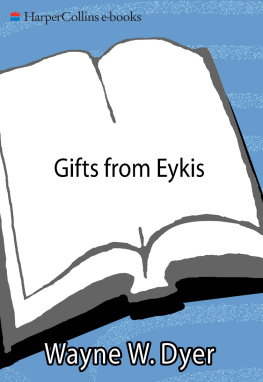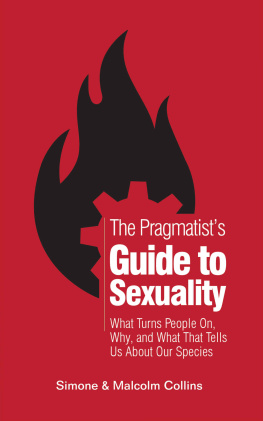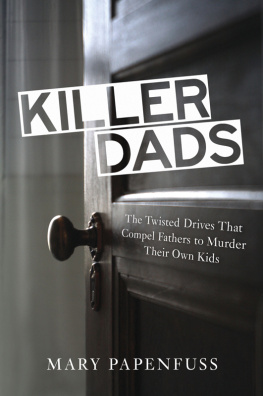Compelle intrare: since the time of St Augustine, St Lukes words in the parable of the Banquet have served as a justification for forced conversion to Christianity. Challenging this tradition, in 1686 Pierre Bayle denounced how a literal interpretation of the parable had led to a long line of crimes, and argued that nothing is more abominable than obtaining conversion by coercion.
In recent decades, scholarly research on conversion in the Early Modern Age has increasingly focused on intriguing aspects such as the fluidity of converts identity and their crossing of borders both geographical and confessional. This book takes a different perspective and brings the focus back to the dark side of conversion, to the varying degrees of violence that accompanied Catholic missionary activities in the non-European World in the 16th and 17th centuries. The essays collected here examine three areas where, sometimes visibly, sometimes much more subtly, the violent aspects of conversion took shape: doctrine, missionary practice, and the conversion narratives.
Investigating the connection between violence and conversion is a way to reflect not only on the early modern world, but also on that of the present day, when conversion including by coercion has yet again become a significant issue.
Contributors : Adone Agnolin, Pedro Lage Correia, Ronnie Po-Chia Hsia, Girolamo Imbruglia, Vincenzo Lavenia, Stefania Pastore, Sabina Pavone, Chiara Petrolini, Christian Windler, Carlos Zeron.
Vincenzo Lavenia is Associate Professor of Early Modern History at the University of Bologna.
Stefania Pastore is Associate Professor of Early Modern History at the Scuola Normale Superiore of Pisa.
Sabina Pavone is Associate Professor of Early Modern History at the University of Macerata.
Chiara Petrolini is a postdoc researcher at the Institute of Austrian Historical Research, University of Vienna.
Viella Historical Research
Compel People to Come In
Violence and Catholic Conversions in the non-European World
edited by Vincenzo Lavenia, Stefania Pastore, Sabina Pavone, Chiara Petrolini
viella
Copyright 2018 - Viella s.r.l.
All rights reserved
First edition: November 2018
Prima edizione digitale in formato ePub: marzo 2020
ISBN 978-88-3313-427-7 ePub
This volume is published with the contribution of the University of Macerata, Department of Political Sciences, Communication and International Relations, and Department of Education, Cultural Heritage and Tourism.
Cover illustration: La idolatria de los indios [] destruita por un Religioso, in Francisco Romero, Llanto sagrado de la America meridional , Milan, Marcos Antonio Pandulfo Malatesta, 1693.
viella
libreria editrice
via delle Alpi, 32
I-00198 ROMA
tel. 06 84 17 758
fax 06 85 35 39 60
Contents
V incenzo L avenia, S tefania P astore, S abina P avone, C hiara P etrolini
Introduction
I. Thinking Conversion and Violence
G irolamo I mbruglia
Ad militandum : Sacrifice and the Jesuit Mode of Proceeding
C arlos Z eron
Different Perceptions on the Topic of Forced Conversion, after the South Atlantic Experience
A done A gnolin
Violence and Adaptability of the Word: Jesuits and Natives in Portuguese America (16 th -17 th Centuries)
II. Conversions and Missions: Practicing Violence?
C hristian W indler
From Dreams of Alliance and Mass Conversions to the Ambivalences of Court Life: Catholic Missionaries in Safavid Persia
P edro L age C orreia
Violence, Identity and Conscience in the Context of the Japanese Catholic Missions (16 th Century)
S abina P avone
Practices of Conversion in South India in the 16 th and 17 th Centuries: Strategies and Narratives
R onnie P o- c hia H sia
Who Were the (Luke 14:23) in the Jesuit China Mission?
V incenzo L avenia
Telling Conversion Stories: Loreto as a World Sacred Space (16 th -17 th Centuries)
C hiara P etrolini
A Sweet Conversion: Tommaso Campanellas Quod Reminiscentur
Abstracts
Notes on Contributors
V incenzo L avenia, S tefania P astore, S abina P avone, C hiara P etrolini
Introduction*
1. Early in this century, Trinity Evangelical Lutheran Church in the Steglitz quarter of Berlin was earmarked for demolition due to lack of worshippers. Things changed however in 2015, when the pastor Gottfried Martens, who has spoken of the turnaround as a miracle of the Holy Spirit, baptised a thousand or so adults in the space of a few months. The majority were asylum-seeking Muslims from Iran and Afghanistan, fast-tracked through a three-month catechism. Thanks to the new faithful, the church in Steglitz has become one of the busiest in the city, even holding weekly services in Farsi. Numerous baptisms of Muslims seeking refuge in Europe have also been celebrated in the public baths at Hamburg, while in Austria, 750 adults (three-quarters of them from Islamic countries) Why all the hurry? We need to remember that, while being in principle strictly religious and individual matters, conversions are rarely in reality wholly confined to the theological or ecclesiastical sphere, any more than to the entirely private, but have significant repercussions on civil life and on the formation or maintenance of communities. They are social symptoms and the lure of being able to measure the intermingling of individual impulses and social pressures, of inner convictions and outer loyalties, is one of the factors that explain the attraction the theme exerts over scholars from very different disciplines. This mesh of social and religious contexts out of which the individual biography emerges is observable not only in contemporary societies but also in those of long ago. It is also the case, of course, in our own day that the conversion stories of asylum-seekers go into the dossiers compiled with a view to establishing refugee status; they are assessed in the course of reconstructing the individuals circumstances and estimating the dangers the candidate might be exposed to were he or she to be repatriated. These are far from being it goes without saying neutral documents.
The same could be said of the conversion practices, and accounts of them, which we will be looking at in this book, which brings together the papers submitted to a symposium held at Macerata on December 3rd and 4 th 2015. The gathering was organised as the conclusion of a research project into conversion accounts prepared or received in Rome, the capital of the Catholic world, between the 16 th and the 18 th centuries, which deal with non-European neophytes not coming over from other Christian confessions. The theme of the relationship between conversions and violence seemed to us an important one, for reasons we will go into in this introduction, but we want to note at the outset how, in putting together the essays that make up this volume, devoted as it is to a far-off and circumscribed portion of world history, we have been struck by the troubled and troubling continuity, and surprising reappearance in European public life, of the problems and opportunities generated by a change in religion. The Austrian priesthood were invited by the ecclesiastical authorities to scrutinise baptismal candidates not least because the civil authorities had ruled a number of conversions as not credible, but simulated in order to obtain residence permits available to the victims of religious persecution, to expedite cases, or for personal advantage (to obtain priority assistance, for example, from religious communities in the host country). Depending on their viewpoint, newspapers and internet sources homed in on the opportunism of either the asylum-seekers or the clergy (or both). These episodes, wrote the Austrian bishops, had brought the Church into disrepute and risked creating conflict between the spiritual authorities, who had endorsed the conversions with baptism, and the civil authorities, who denied their plausibility. This intervention by the Episcopal Conference was in some ways unusual, in so far as the Roman Church, has been extremely cautious, since Vatican II, in pronouncing on evangelisation. Jorge Mario Bergoglio, the first Jesuit pope, in his papacys manifesto Evangelii gaudium , referred back to a declaration by Benedict XVI, that the Church does not grow by proselytism but by attraction. His position surely testifies to an unease caused by the awareness that conversion is always a hot potato, a fertile terrain for overwrought apologetics and associated with interfaith polemics and violence.











